Business & Money
Young African Women Misled into Drone Production Jobs in Russia
A significant portion of this labor force is responsible for assembling drones, handling chemicals, and painting the products. In the first half of the year, 182 women were recruited, mainly from Central and East African countries, via a Facebook page promoting the Alabuga Start program. Recruiting events were also organized in Uganda, focusing on vulnerable groups like orphanages.

:Discover how young African women are being misled into drone production jobs in Russia, facing exploitation and false promises of better opportunities.
In a bid for a better future, young African women were lured by social media ads promising free plane tickets, financial incentives, and the thrill of an adventure in Europe.
The catch?
A simple computer game and a 100-word Russian vocabulary test.
What began as a hopeful journey soon turned into a grim reality for many who discovered, only after their arrival in Russia’s Tatarstan region, that they were destined for factory work—not the hospitality and catering careers they had envisioned.
Instead, they found themselves assembling Iranian-designed attack drones intended for warfare in Ukraine.
Interviews with these women conducted by The Associated Press revealed a harrowing experience marked by long hours, constant surveillance, and disillusionment with broken promises regarding wages and educational opportunities.
Some described exposure to harmful chemicals that left their skin irritated and pockmarked.
To address a pressing labor shortage amid wartime demands, the Kremlin has been recruiting women aged 18 to 22 from countries including Uganda, Rwanda, Kenya, South Sudan, Sierra Leone, Nigeria, and even Sri Lanka.
This initiative is now expanding to other parts of Asia and Latin America.
In Tatarstan’s Alabuga Special Economic Zone, approximately 200 African women work alongside Russian vocational students, some as young as 16, in a facility crucial to Moscow’s weapons production.
One woman, who had given up her job back home for the Russian opportunity, remarked, “I don’t really know how to make drones.”
A Promising Start Turns Sour
The women arrived full of hope, documenting their journey with selfies at the airport and videos of in-flight meals, eagerly pointing to “Europe” on the in-flight map. However, upon reaching Alabuga, the grim reality set in.
“The company is all about making drones. Nothing else,” one woman lamented as she assembled airframes. “I regret and curse the day I started making all those things.”
A clue about their grim fate could be found in the vocabulary test they were required to take, which included terms like “factory” and the verbs “to hook” and “to unhook.” The working conditions were oppressive, characterized by extensive surveillance both at their dormitories and at work.
Their hours were long, and the wages were far lower than anticipated—an experience corroborated by three other women interviewed by AP, who remain anonymous for their safety.
Factory management reportedly seeks to deter the African workers from leaving. While some women have managed to leave or find other work in Russia, verification of these claims has proven difficult.
A Weapon Production Hub in Tatarstan
The Alabuga Special Economic Zone, established in 2006 to attract business and investment, has seen a significant shift toward military production since the onset of the Ukraine war.
In 2022, Russia and Iran signed a $1.7 billion agreement to supply unmanned aerial vehicles (UAVs) for combat.
Production of these drones has moved from disassembled imports to full-scale manufacturing at Alabuga, where the goal is to produce 6,000 drones annually by 2025—an ambition that is already ahead of schedule with 4,500 units reported.
Finding labor has been a challenge. With unemployment at historic lows and many Russians already engaged in military activities or having fled abroad, Alabuga turned to vocational students and cheap foreign labor.
Experts note that Alabuga is unique in recruiting women from Africa, Asia, and South America for weapon production, with 90% of foreign women working on drone assembly—tasks that typically require minimal skill.
Recent reports indicate that the workforce is expected to grow from under 900 employees in 2023 to over 2,600 by 2025.
Much of this labor force is tasked with assembling drones, using chemicals, and painting the products. In the first half of the year, 182 women were recruited, primarily from Central and East African countries, through a Facebook page promoting the Alabuga Start program.
Recruiting events were even held in Uganda, targeting vulnerable groups such as orphanages.
Although the campaign does not specify why it focuses solely on young women, some analysts suggest that this demographic may be perceived as easier to control. Leaked documents indicate that assembly lines are segregated, using derogatory language toward the African workers.
Life Under Surveillance
The foreign workers travel by bus from their dormitories to the factory, navigating multiple security checkpoints.
The living quarters are heavily monitored, with entry controlled by facial recognition technology and round-the-clock surveillance.
The women are prohibited from bringing personal items like pets, alcohol, or drugs. While they are issued local SIM cards, these must remain outside the factory due to its sensitive military nature.
One worker noted, “I could only talk to an AP reporter with my manager’s permission,” while others reported that their messages were monitored and that they were discouraged from discussing work with outsiders. Workers were instructed to report on their colleagues, fostering an atmosphere of mistrust.
The drone assembly process exposes workers to hazardous substances without adequate protective gear, leading to painful skin reactions. “My God, I could scratch myself! I could never get tired of scratching myself,” one woman reported, highlighting the physical toll of their labor.
In addition to chemical hazards, the complex itself was targeted in a Ukrainian drone strike in April, injuring at least 12 workers. A video shared with AP featured a Kenyan woman condemning the attackers as “barbarians,” insisting that their efforts to intimidate were futile.
A Culture of Exploitation
While one woman expressed satisfaction with her job due to the pay and the opportunity to meet new people, the majority of those interviewed had a different perspective. Initially promised $700 a month, social media posts later revised this figure to “over $500.” With deductions for accommodation, airfare, medical care, and language classes, many struggled to cover basic expenses.
The women described their treatment as “maltreated like donkeys, being slaved.” Compounded by banking sanctions against Russia, sending money home has become increasingly difficult.
Although some managed to send back small amounts, the financial burden weighed heavily on many.
Long shifts lasting up to 12 hours with unpredictable days off became the norm. Yet, two women working in the kitchen remained hopeful, willing to endure hardships if it meant supporting their families.
Wages have been a growing concern, leading to lower morale among workers. Plant managers have expressed a desire to replace foreign workers with Russian-speaking staff, as candidates increasingly refuse low salaries.
Russian and Central Asian students at Alabuga Polytechnic have reported being allowed to return home, while vocational students wishing to quit must repay tuition costs.
Despite repeated attempts by AP to reach the Russian Foreign Ministry and officials from Tatarstan for comment on the workers’ complaints, no responses were received.
Human rights organizations expressed ignorance regarding the factory’s operations but noted that such recruitment practices align with Russia’s broader pattern of exploiting foreign labor.
The International Implications
Russia’s strategy has allowed for a dramatic increase in drone production capabilities. Nearly 4,000 drones were launched in Ukraine from February 2022 through 2023, with nearly double that number in the first half of this year alone.
Despite the Alabuga plant’s production goals being met, concerns remain about the quality of the drones produced, as manufacturing issues tied to unskilled labor may lead to malfunctions.
An analysis of 2,000 Shahed drone attacks documented by Ukraine’s military reveals a troubling trend: about 95% of these drones fail to hit their intended targets. Many end up crashing into Ukraine’s fields, straying into NATO member Latvia, or falling within Russian territory.
Experts attribute this high failure rate not only to improved Ukrainian air defenses but also to the potential lack of craftsmanship stemming from a workforce that may not have the necessary training or experience.
In response to these alarming developments, the Alabuga Start recruiting campaign continues, buoyed by a polished social media presence that presents an enticing, albeit misleading, narrative. Women are drawn in by promises of opportunity and adventure, unaware that they may become unwitting participants in a machinery of war.
Keywords:African women exploitation:Drone production jobs:Russia job market:False promises:Youth employment challenges
Business & Money
Ethiopia Attracts $53.5 Million in Q1 Investments, Creates 8,700 Jobs
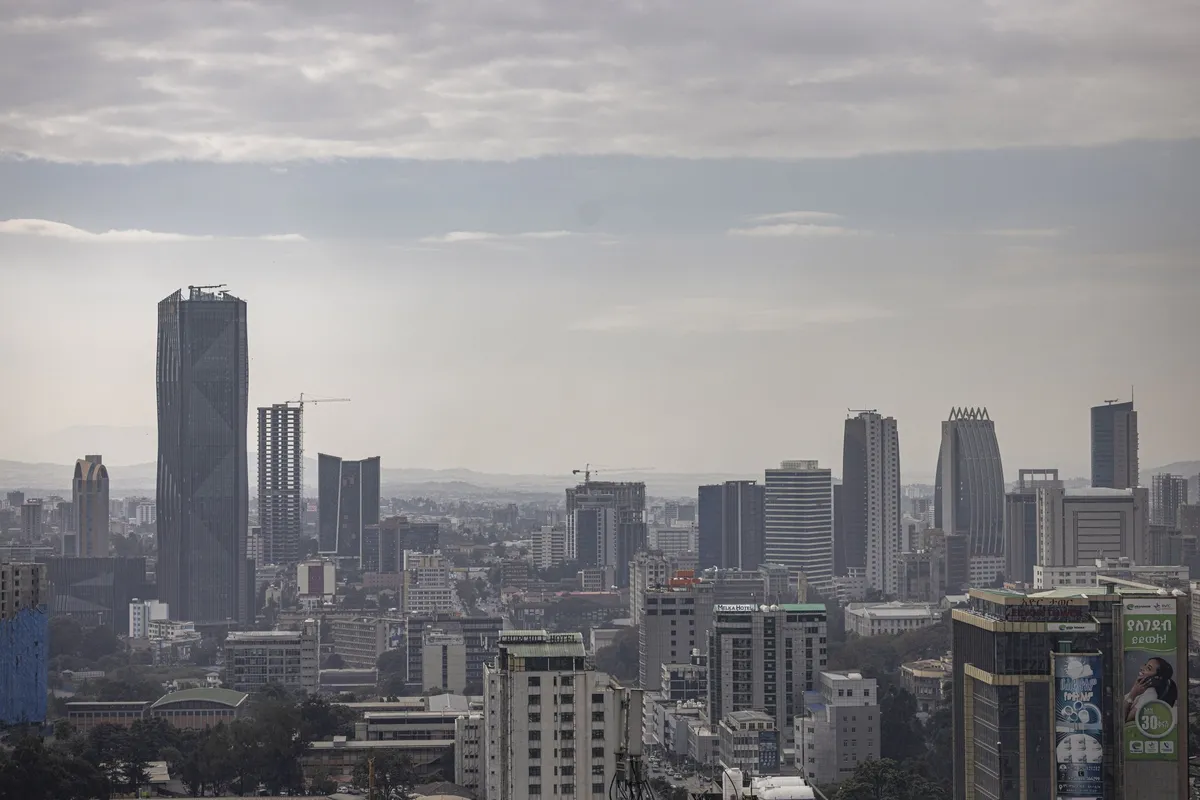
: Ethiopia attracts $53.5M in Q1 investments, creating 8,700 jobs. Growth driven
by reforms, with a focus on service and manufacturing sectors.
The Addis Ababa Investment Commission (AAIC) announced a promising start to the
2023/24 fiscal year, with 612 investors registering a combined capital of Birr 2.93 billion
($53.5 million) in the first quarter.
This reflects a 13% growth compared to the same period last year, signalling sustained
investor confidence despite economic challenges.
Speaking at a press briefing on November 30, AAIC’s Director of Communication,
Meseret Woldemariam, credited the growth to policy reforms and enhanced investor
facilitation.
“Our efforts to streamline investment processes and resolve bottlenecks are yielding
results. We remain committed to ensuring investors thrive in Addis Ababa,” she said.
SECTORIAL CONTRIBUTIONS
The majority of the newly licensed investors are in the service and manufacturing
sectors. The service sector includes hotels, tourism, and IT ventures, while the manufacturing
investments span electrical products, steel, wood, and textiles.
These investments have generated 8,707 jobs, comprising 770 permanent and 490
temporary positions created by newly licensed entities.
The AAIC has also initiated field monitoring visits to ensure operational readiness. “Our
team works closely with new investors to address challenges promptly, enabling faster
project rollout,” Meseret added.
CHALLENGES AND REFORMS
Investors continue to face hurdles such as foreign currency shortages and workspace
availability. However, the commission highlighted progress due to macroeconomic reforms,
particularly improving foreign currency access.
“We are actively collaborating with the Mayor’s office to address workspace issues
through professional support in rental solutions and operational guidance,” Meseret
explained.
Recent reforms in the National Bank of Ethiopia’s foreign exchange policy have also
been pivotal. In October, the central bank announced a 30% increase in forex allocation to priority sectors, a move welcomed by stakeholders.
EXPANSION PLANS AND PROJECTIONS
The AAIC aims to capitalise on the momentum, targeting Birr 15 billion ($274 million) in
investments by the end of the fiscal year. A new digital investment portal, launched in November, promises to reduce registration times by 40% and improve transparency.
“We are confident these initiatives will not only attract more investors but also deepen
the trust of existing ones,” Meseret concluded.
INVESTOR SENTIMENT
Prominent business leader Ahmed Yusuf, who recently launched a $3 million IT hub in
Addis Ababa, praised the commission’s efforts.
“The improvements in investor services and forex allocation are encouraging. We hope
to see more streamlined processes for licensing and operations,” he remarked.
As Ethiopia seeks to position itself as a regional investment hub, sustained efforts in
addressing investor concerns and enhancing infrastructure will be critical.
Business & Money
Ethiopia Eyes December Debt Restructuring After IMF Review
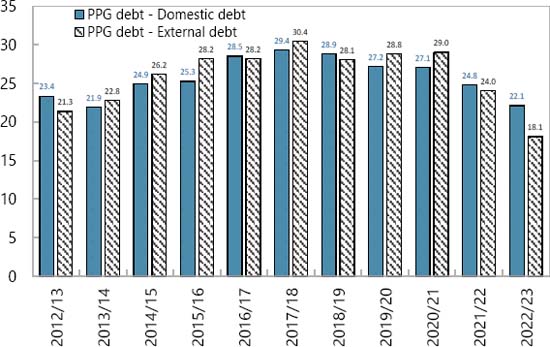
: Ethiopia’s December IMF review may unlock long-awaited debt restructuring,
crucial for economic reforms and stalled projects like the Koysha Hydroelectric
Dam.
Ethiopia’s much-anticipated debt restructuring prospects could gain clarity this
December, as the country awaits the second review under its four-year International
Monetary Fund (IMF) program.
The Extended Credit Facility (ECF), launched in August 2023, remains central to
Ethiopia’s economic reform and debt relief efforts.
Progress Toward Debt Treatment
Last week, Ethiopian authorities reached a staff-level agreement with the IMF tied to the
second review. A comprehensive report on this review is set for release in December, a month many stakeholders, including the National Bank of Ethiopia (NBE), view as pivotal for
advancing debt treatment plans.
“Debt restructuring stands at the centre of our reform agenda. With the report’s release,
we expect rescheduling talks to gain momentum,” said Habtamu Workneh, Director of
External Economic Analysis & International Relations at the NBE.
He added that discussions are focusing primarily on extending maturity dates for Ethiopia’s debts.
IMF Support and Engagements with Creditors
The IMF has provided Ethiopia with USD 2.5 billion under its current fiscal program,
offering critical support to the country’s macroeconomic stabilisation efforts.
In parallel, Ethiopian authorities have engaged with Eurobond holders and the Official
Creditors Committee (OCC).
A debt restructuring proposal was submitted to Eurobond holders in July 2024, following
key discussions in December 2023 and May 2024.
Additionally, a global investor update held on October 1, 2024, highlighted the nation’s
ongoing economic challenges and progress in creditor negotiations.
Shifting Debt Landscape
The government has reported improvements in its debt profile. Planning and Development Minister Fitsum Assefa (PhD) announced that Ethiopia had ceased relying on commercial loans and direct borrowing from the central bank.
She noted a significant drop in the external debt-to-GDP ratio to 13.7 per cent, though
the IMF’s Debt Sustainability Analysis, published in July 2024, pegged the ratio at 18
per cent as of June 2023.
External debt accounts for 45 per cent of Ethiopia’s total public and publicly guaranteed
debt, the report stated.
Financing Challenges Persist
Despite these reforms, Ethiopia’s financing challenges remain acute.
The government is seeking nearly USD 1 billion to complete the Koysha Hydroelectric
Dam project, which has stalled at two-thirds completion due to funding shortfalls.
The project is a critical component of Ethiopia’s development strategy, but its delays
underscore the broader fiscal pressures the country faces.
Expert Views on Economic Outlook
While Ethiopian officials are optimistic about the December review as a turning point,
analysts caution that real progress hinges on creditor consensus and the government’s
ability to implement reforms.
Critics have also raised concerns about inflated GDP growth figures, which they argue
may distort Ethiopia’s true debt sustainability.
Looking Ahead
The IMF review, coupled with Ethiopia’s active engagement with creditors, could mark a
a significant step forward in its quest for debt relief.
December will likely be a defining month for the country’s economic future, with broader
implications for its ability to attract investment and complete critical infrastructure
projects.
Business & Money
KCB Group Surpasses Equity with US$ 342.31 Million Nine-Month Profit
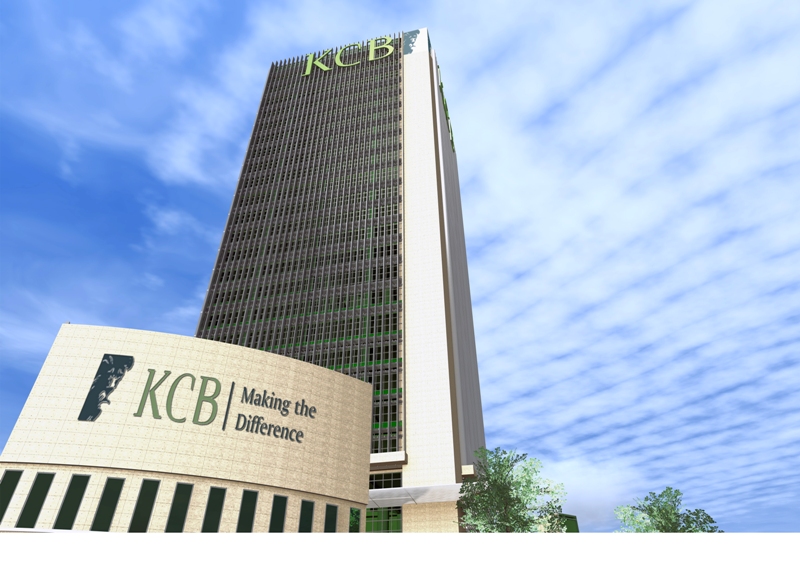
: KCB Group reports Sh44.5B ( US$ 342.31) nine-month profit, outpacing
Equity Bank. Learn about its 49% growth, challenges, and stock performance this
year.
KCB Group Plc has outperformed Equity Bank to cement its position as Kenya’s leading
lender, posting a net profit of Sh44.5 billion for the nine months ending September
This represents a 49% year-on-year growth, surpassing Equity Bank’s Sh37.5
billion profit during the same period.
Profit Growth Driven by Core Business Performance
The remarkable profit growth was fueled by higher earnings from both interest and non-
interest income streams. KCB’s diverse revenue base has been pivotal in maintaining
its dominance in the competitive banking sector.
Non-Performing Loans a Key Concern
Despite the impressive profit growth, KCB’s non-performing loan (NPL) ratio rose to
18.5%, compared to 16.5% last year. This increase highlights persistent challenges in
managing credit risk, with Chief Financial Officer Lawrence Kimathi acknowledging it as
a “pain point” for the bank.
KCB Stock Outshines Peers on NSE
KCB’s strong financial performance has translated into exceptional stock market results.
The bank’s stock has risen 78.8% year-to-date, making it the best-performing banking
stock on the Nairobi Securities Exchange (NSE).
Plans to Sell National Bank of Kenya
Earlier this year, KCB announced plans to sell its struggling subsidiary, National Bank of
Kenya (NBK), to Nigeria’s Access Bank. While Nigerian regulators have approved the
deal, it is still awaiting clearance from Kenya’s Central Bank. The sale aims to
streamline KCB’s operations and address losses at NBK.
CEO Paul Russo Optimistic About Year-End Performance
“The journey has not been without its hurdles, but our ability to walk alongside our
customers has driven our success,” said KCB CEO Paul Russo. He expressed
confidence in closing the year on a high note, leveraging improving economic conditions
across the region.
Key Figures at a Glance
● Net Profit: Sh44.5 billion (+49%)
● Non-Performing Loan Ratio: 18.5% (up from 16.5%)
● Stock Performance: +78.8% year-to-date
KCB’s strong performance underscores its resilience in navigating challenges and its
commitment to sustaining growth in Kenya’s banking sector.
-

 Politics5 months ago
Politics5 months agoFred Okengo Matiang’i vs. President William Ruto: A 2027 Election Showdown
-

 Business & Money10 months ago
Business & Money10 months agoEquity Group Announces Kshs 15.1 Billion Dividend Amid Strong Performance
-

 Politics4 months ago
Politics4 months agoIchung’wah Faces Mt. Kenya Backlash Over Gachagua Impeachment Support
-

 Politics6 months ago
Politics6 months agoPresident Ruto’s Bold Cabinet Dismissal Sparks Hope for Change
-
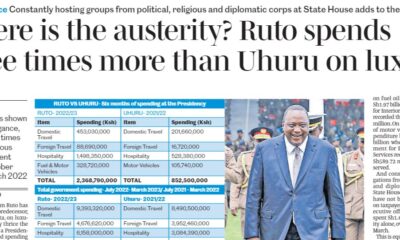
 Politics7 months ago
Politics7 months agoPresident Ruto’s Lavish Spending Amid Kenya’s Economic Struggles Sparks Outrage
-

 Politics6 months ago
Politics6 months agoJohn Mbadi Takes Over Kenya’s Treasury: Challenges Ahead
-
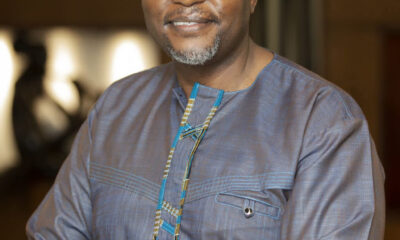
 Business & Money2 months ago
Business & Money2 months agoMeet Kariuki Ngari: Standard Chartered Bank’s new CEO of Africa. What’s Next?
-
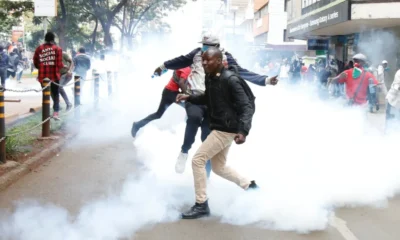
 Politics7 months ago
Politics7 months agoKenya Grapples with Investor Confidence Crisis Amid Tax Protest Fallout





